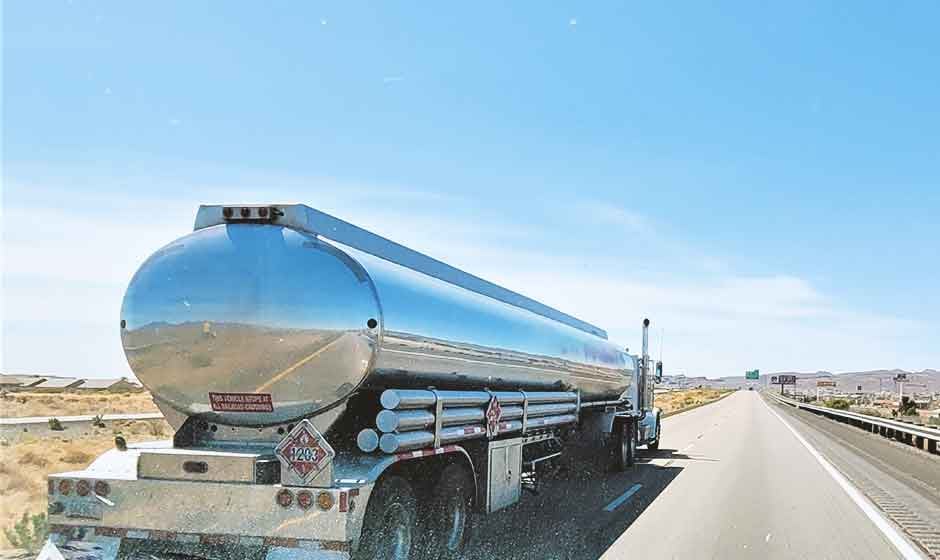 All truck drivers are equipped with a Commercial Driver’s License (CDL). With a CDL, they can legally and safely operate a semi-truck.
All truck drivers are equipped with a Commercial Driver’s License (CDL). With a CDL, they can legally and safely operate a semi-truck.
For many trucking jobs, a CDL is the only licensure and certification the driver needs. However, some types of freight and certain locations require the driver to have additional credentials.
Understanding common driver credentials, along with when they are required, can help you more accurately specify requirements for each shipment.
Drivers at Anderson Trucking Service (ATS) carry a variety of credentials. With nearly 70 years of trucking experience under our belts, we’ve seen all kinds of requirements and requests.
Today, let’s talk about some of the most common driver credentials and when they’re necessary.
In this article, you’ll learn:
- The definition and uses for truck driver certifications
- When and how to ask for a driver with additional certifications
With this information, you’ll be able to ensure each driver you use meets your specific needs, saving you a significant amount of time and hassle.
Common Truck Driver Certifications and Credentials
Transportation is flush with ways for truck drivers to refine their skills and open themselves up to greater freight opportunities through certification. Here are the most common certifications a truck driver may need to haul your freight:
- Transportation Worker Identification Card (TWIC)
- Transportation Security Administration (TSA) Certification
- Government Security Clearance
- Hazardous Materials Endorsement
- Tanker Endorsement
- “X” Endorsement
What Is a TWIC (Transportation Worker Identification Card)?
Needed for: Dropping off or picking up freight at a port
Qualifications: Background check, security clearance
Maritime ports are regulated by the Transportation Security Administration (TSA). As a government body, they have introduced the TWIC to standardize the requirements for port security.
Drivers who will be picking up or dropping off freight at a port need to have a TWIC card.
Drivers without TWIC may be able to access the port if they have an escort, but it isn’t always easy or time-effective to find an escort — and sometimes none are available at all.
Individual ports may have requirements in addition to TWIC.
What Is a Transportation Security Administration (TSA) Certification?
Needed for: Dropping off at an airport (not needed for picking up at airports)
Qualifications: Completed Security Threat Assessment, trucking company certified by TSA’s Indirect Air Carrier Management System
As part of the airport security process, all drivers dropping freight off at an airport must have TSA certification, whether the freight is intended for an airline or an on-site vendor.
Unlike the other certifications on this list, the TSA certification is held by both the carrier and the driver.
Learn more about TSA certification.
What Is Government Security Clearance for Truck Drivers?
Needed for: Hauling specific government/Department of Defense (DOD) cargo
Qualifications: Complete Standard Form (SF-86) and background check
Only drivers with government security clearance can haul freight classified as transport protective services (TPS) and certain categories of arms, ammunition and explosives (AA&E) freight. Most loads of sensitive or classified information will require this clearance.
Government security clearance requires the driver to supply extensive information that includes employment history, familial information, foreign contacts, criminal record, drug history, past residences and more.
What Is a Hazardous Materials Endorsement for Truck Drivers?
Needed for: Hauling freight classified as hazardous
Qualifications: Background check, knowledge testing and continuing education
A hazardous materials endorsement or HazMat endorsement signifies that the driver is able to carry hazardous materials. Only drivers with this certification can transport placarded freight as defined in the Code of Federal Regulations, Title 49, parts 100-185.
The Ultimate Guide to Hazmat Freight Shipping has more information about shipping hazardous freight and required certifications.

What Is a Truck Driver Tanker Endorsement?
Needed for: Transporting bulk liquids as defined by the Federal Motor Carrier Safety Administration (FMCSA)
Qualifications: Knowledge testing and continuing education
Tanker endorsement, noted by an “N” on the driver’s CDL, authorizes the driver to transport bulk liquids. If you’re shipping containers of 118+ gallons of liquid or require a tanker truck to haul more than 1,000 gallons of liquid/gas, a tanker-endorsed driver is required.
Related Article: What Is a Tanker Endorsement?
What Is X Endorsement on a CDL?
Needed for: Hauling hazardous liquid freight; can also be used for hauling tanker or hazmat freight
Qualifications: Knowledge testing and continuing education
When freight is both hazardous and a bulk liquid/gas (like gasoline or propane), the driver needs specialized knowledge to move it safely to its destination. The X endorsement — so-called because an X appears on the CDL — means the driver is trained for moving both types of freight.
In addition to certifications and endorsements, there may be other paperwork or informal qualifications drivers need at various sites.

What Are Other Qualifications Truck Drivers Can Carry?
Depending on what is required at your site, you may need to ask for other types of driver qualifications. Talk to your transportation provider as soon as possible if you require any certification or qualification.
- Passport: Needed for carrying freight over the border, can also be used as identification.
- U.S. citizenship: Specify if the driver will need to prove citizenship. If naturalized citizens are not allowed on-site, please specify that as well.
- Clean driving record: Depending on the carrier, some drivers may have a record with minor traffic violations or other infractions. If your site is restricted against any type of criminal record, be specific about what is needed.
- Pet free: Some drivers travel with a furry friend. Let your representative know if that isn’t allowed or if there are special restrictions.
Whether you require a driver with specific training or have a more informal policy for drivers to follow, it’s important to specify that before they start transit. This will help you save on potential accessorial charges, and make sure you get a driver with the qualifications you need.
How to Ensure Your Driver Has the Right Qualifications
The best way to ensure your freight is matched with the right driver is to be clear and upfront with the representative who is booking your freight.
If you’re not sure what requirements your driver will need, be sure to specify as many details as possible when you book your shipment.
- Give a full street address for the origin and destination, as well as a brief description of the location. For example: The location is a Naval base, enter through the west gate, park outside door one, etc.
- Respond quickly to questions. An experienced representative may use lessons learned on past loads to clarify if your load has similar requirements. Accurate information is extremely important — if you don’t know the answer, give your representative a timeline of when they can expect a final answer, and then find the correct information.
- Name the commodity. Some freight will have strict requirements for driver certifications (usually weapons or classified government materials).
- Share past driver experiences. If drivers sometimes get lost at or on the way to your location, give clarifying directions. If you can provide driver amenities like a tarping shed, make sure they know that. There’s no such thing as too many details.
Providing clear and thorough information when booking the load will save time and potential accessorial charges, such as truck ordered not used (TONU).
Find a Qualified Driver for Any Job
The Commercial Driver’s License (CDL) is the foundational requirement for all truck drivers, but specific jobs and locations may necessitate additional credentials.
From the Transportation Worker Identification Card (TWIC) for port access, to the Transportation Security Administration (TSA) Certification for airport deliveries and Government Security Clearance for transporting sensitive materials, special certifications ensure compliance with diverse regulatory standards.
Hazmat endorsements, tanker endorsements and the versatile X endorsement demonstrate a driver's expertise in handling hazardous materials, bulk liquids or a combination of both.
Beyond certifications, other qualifications, such as a passport, U.S. citizenship, a clean driving record or a pet-free status, can be crucial depending on site requirements. To ensure the right driver is matched with your freight, effective communication with your representative during booking is key.
The Freight Carrier Selection Checklist can help you vet carriers to find the best one for your valuable cargo. When you’ve chosen a carrier, communicating with them is the best way to avoid unexpected charges and delays.



